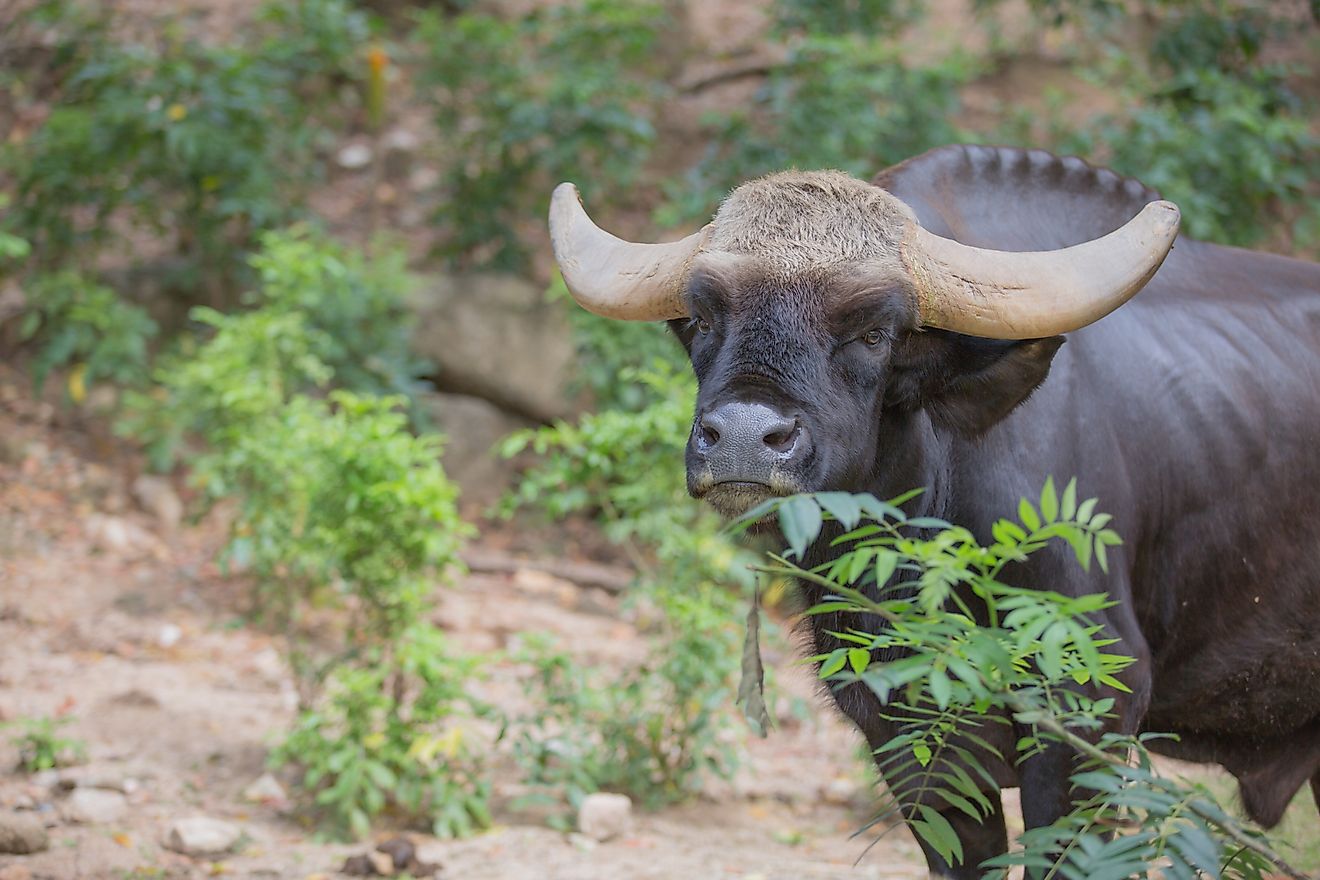Gaur Facts: Animals of Asia

5. Physical Description
The gaur is a large wild species related to cattle, buffaloes, bisons, and yaks. Its height at the shoulders reaches 5.6 to 7.2 feet (1.7-2.2 meters), and its body length from head to rump spans 8.2 to 10.8 feet (2.5-3.3 meters). A mature male gaur has a sleek, black coat, while the females and young ones have a brown coat. The horns of a male and female gaur alike are yellow in color with black tips, and they curve skywards. Horns can grow up to 2.6 feet (80 centimeters) in length. Unlike the common domestic cow, under their necks gaurs have a "dewlap" of skin, which stretches from their throats to their forelegs. As adults, they weigh between 1,543 and 2,204 pounds (700-1,000 kilograms).
4. Diet
Green grass is the main staple food for the gaur. It does, however, also feed on flowers, cashews, teak bark, young bamboo shoots, herbs, shrubs, and fruits. It feeds by grazing on plains during the day, or by browsing on trees or woody herbs. The optimum feeding time for the gaur is in the early morning and evening. However, when their habitat becomes disturbed by human activities at these times, they may become more nocturnal, and feed during the nights instead.
3. Habitat and Range
India has the highest population of gaurs of any country. Nonetheless, such countries as Myanmar, Bangladesh, Bhutan, Cambodia, Vietnam, Thailand, Malaysia, Nepal and China have significant guar populations too. In these countries, gaur habitats are to be found on rocky, forested, hills with grass at their summits, or in grassy plains. According to the International Union for Conservation of Nature (IUCN), the gaur is a "Vulnerable Species", as only an estimated 13,000–30,000 of them remain globally. The IUCN reports its populations have declined by 70% over the last three generations in Indochina, Malaysia, China, and Myanmar. The decline is attributed to wild meat hunting, trade in gaur’s horns in South East Asia, habitat loss due to human encroachment, and outbreaks of bovine diseases such as rinderpest and foot-and-mouth, which are often spread to them from domestic cattle.
2. Behavior
A gaur herd can have 5 to 20 members. Each herd is led by a dominant bull, with several females in tow. Younger bulls cluster themselves in bachelor groups, but very old bulls lead solitary lives. Each herd can have a home range of 30 square miles. When threatened, the gaur bull attacks its opponents from their broadsides. It lowers its own head and hind side, and then strikes from the broadside with its horns. Though a huge animal, the gaur moves swiftly. Their alarm call is called a "whistling snort". Still, the gaur is generally hard for humans to approach, as it is a shy and wary animal.
1. Reproduction
Sexual maturity for the gaur begins between 2 and 3 years of age, according to the Animal Files. Gaur females give birth at intervals of 12 to 15 months. Breeding occurs all year round, but the peak mating seasons occur in the cold months. An unattached male gaur goes looking for receptive females, while making mating calls of clear resonant tones. Bigger gaur bulls have advantages over smaller ones. When mating, the gaur bull bellows loudly, and can be heard as far as 1 mile (1.6 kilometers) away. The gestation period for gaur generally lasts 270 to 280 days, after which time a single calf, weighing about 50 pounds, is born. A gaur's average lifespan is 30 years.











